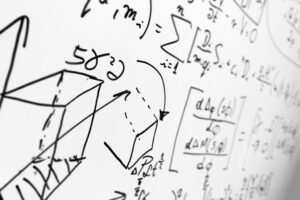What is in a job description?

Objective/Usage of job descriptions
Job Descriptions are agreed definition and benchmark of tasks, knowledge, skills and competences needed to do a particular job.
A Job Description is to identify for a jobholder the contribution required by the organisation. It is a fundamental tool for a manager who can use it to ensure that his/her subordinates understand what they have to achieve and the criteria on which their performance will be assessed.
Job descriptions form the foundation for several important areas of human resource management including:
- Recruiting and Screening: Accurate position descriptions provide the basic information about open positions which is required to make a good match between the candidate’s qualifications and the job’s demands.
- Training and Development: Well-written position descriptions identify the education, experience, and skills necessary to effectively and safely perform the job. They can help employees pinpoint their own weaknesses and help supervisors tailor appropriate training programs.
- Career Ladders: Accurate position descriptions are a tool in developing upward mobility programs. A study of position descriptions can reveal the relationships among certain jobs and the knowledge and skills needed to advance from one job to another.
- Compensation: Equitable pay structures are based on the external and internal comparison of jobs. A well-written position description facilitates accurate matches to survey positions to collect current market data.
- Performance Appraisal: Position descriptions provide the link between the job and appropriate performance expectations. These performance expectations are a critical factor in evaluating an employee’s performance, merit pay increase, and possible readiness for reclassification or promotion.
They provide information to support the following purposes:
Individual:
- clearer understanding of what is expected from them
- foundation for performance review, objective setting and personal development
Management:
- clarity of each role in their own business area
- foundation for recruitment, performance review, objective setting and role development
Organisation:
- foundation for recruitment, planned progression and career planning
- standard format across the organisation, using a simple document which can be regularly reviewed and updated
- improved communication
Evolution of job descriptions
The traditional view of occupation or job analysis is closely related to the scientific management concept of mass production in business and to the model of effective bureaucracy in public administration. The duties and responsibilities of a job were identified and then assigned to several jobholders simultaneously. Worker initiative was replaced by “the single best way of task performance”, which was included in the job description. Management monitored the performance of jobs from every perspective. However, scientific management has been found lacking in many places as it represents an approach that cannot assist in meeting new demands.
There is no universally accepted method of carrying out an analysis, but the fundamental principles are as follows:
- Every occupation and job can be analysed.
- The result of the analysis can improve communications among management, employees and workers’ representatives.
- The process may facilitate the implementation of planned changes.
- The analyses may serve as starting points for any HRM decision-making.
- Job requirements (knowledge, skills and experience) can be delineated in an appropriate way.
- Competency analyses should be made to determine behavioural characteristics.
- Job analysis based on discernible job behaviours and processes may contribute to effective human resource management.
- Anything that may be recorded in writing in connection with the job may be done so in the course of job analysis.
The most common result of job analysis is the written Job Description – which may be put to good use in many different ways. Job Description can be used when writing job advertisements as they can provide additional information about vacancies. They can assist in deter-mining comparable factors, so making it possible to establish the relative value of a specific job. Performance appraisals may also be conducted on the basis of the duties, responsibilities and behaviours specified in written job descriptions. Further fields of application include using this document as a source of information for interviewing applicants, orienting new recruits, designing induction pro-grammes, and, finally, for defining future needs. Job Description comprises information relevant for both the superior and his subordinate and is, therefore of great importance in terms of their relation-ship.
The orientation of job analysis has changed much in recent years. More and more multinational companies are replacing traditional, task-oriented job descriptions by ones, which are result-oriented, whilst companies with fewer levels of hierarchy (“de-hierarchiesed” companies) prefer to use competency-based job profiles.
Structure of job descriptions
General Information
These are the brief job details which are given at the beginning of the job description and usually include:
- Job Title
- Reports to (title of Manager)
- No. subordinates
Some organisations also include the name of the job holder and other company references in this section.
Job Purpose
This should provide a short and accurate statement of why the job exists. The Role Purpose statement should describe in a single sentence why the role exists and its contribution. The summary should be specific to the role and not a general statement which might apply to a number of roles in the department. What is it that would not happen if the role did not exist?
Main Responsibilities
These are the key responsibilities or main duty areas which the role holder is asked to deliver.
A specific area of the role that requires the role holder to be responsible for taking decisions, delivering results or carrying out a significant amount of activity. Together the accountabilities define the authority, remit and scope of the role, and cover all the major outputs/results expected of the role.
Each key accountability should be entered into a separate box on the left and each should be a different aspect / area of the role. It is unusual to find roles which require less than three or more than six distinctly separate areas.
Areas of responsibility define the expected contributions of the position.
Each area of responsibility is a major role that contributes toward the objective of the position.
Areas of responsibility are not simply tasks commonly undertaken in the position.
Each area of responsibility must:
- Correspond to a permanent objective of the position.
- Precisely indicate expected results of the job function.
- Express “what” position responsibilities are rather than “how” they are fulfilled.
Performance indicators
Qualitative performance criteria for each accountability as measures of the accountabilities. Basis for performance planning and agreement within the performance management system.
If the job descriptions are to be used for performance management purposes, then it may also be useful to include definitions of how performance will be measured against each accountability.
Job requirements
Specification as the requirements for the role:
• Qualifications, e.g. professional qualification, schools
• Experience and Qualifications
• Competencies (behavioural and technical)
In this section, the level of skills, knowledge and abilities required for effective and safe performance of the essential and non-essential functions of the job should be indicated. Vocational or work content skills are those dealing with mastering a particular vocabulary, procedure or subject matter. Skills can include vocational/technical or work content, reading, writing, speaking, mathematical, human relations, reasoning or self-management.
Competencies as “underlying characteristics which lead to superior performance”. These are the knowledge, skills, attitudes, behaviours and motives which will lead to high performance.



